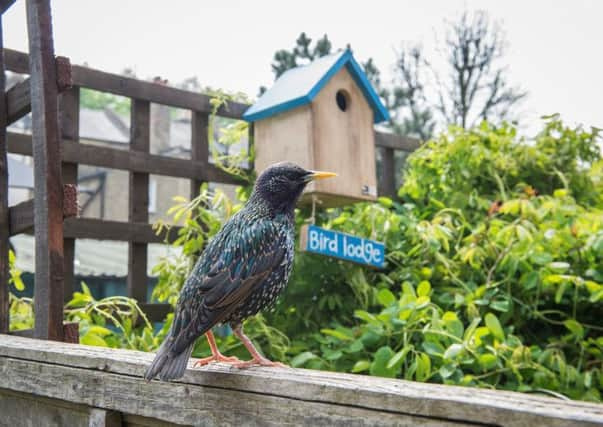Birdwatchers asked to watch out for unusual migrants in their gardens


More than half a million people are expected to take part in this year’s Big Garden Birdwatch by the RSPB, which runs from today until Sunday (January 29).
During the three-day study, the RSPB say people may be able to spot Scandinavian visitors such as waxwings, fieldfares and redwings.
Advertisement
Hide AdAdvertisement
Hide AdThe charity say the birds had left their homelands to feed on the UK’s bumper berry crop as this year’s cold snap continues.
Daniel Hayhow, RSPB conservation scientist, said: “With over half a million people now regularly taking part, coupled with over 30 years worth of data, Big Garden Birdwatch allows us to monitor trends and helps us understand how birds are faring.
“With results from so many gardens, we are able to create a ‘snapshot’ of the birds visiting at this time of year across the UK. Even if you see nothing during your Big Garden Birdwatch hour, that’s important information too, so please let us know.”
Waxwings – birds with dusky pink colouring with a black strip across the eye and a punk-like crest - have been arriving along the east coast of England, with some being spotted as far away as Ireland and Wales.
Advertisement
Hide AdAdvertisement
Hide AdThe feathery visits tend to arrive in the UK every year. But, every send or eight years, the flock to the coast in droves, known as an irruption.
The RSPB added that homes with rowan or crab-apple trees in their garden in particular should look out for the ‘charismatic migrants’.
The birdwatching scheme is key in monitoring the nation’s avian species.
Last year, the most common to be seen in UK gardens was the house sparrow.
Advertisement
Hide AdAdvertisement
Hide AdHowever, their numbers have tumbled since the Big Garden Birdwatch began in 1979, falling by almost 58 per cent.
The milder weather saw an increase in 2016 in the number of small birds seen, such as long-tailed tits.
This year, the survey takes place over three days for the first time, with members of the public asked to spend an hour watching and recording the birds in their garden or a local public space, and then to send their results to the RSPB.
People taking part are also being urged to report some of the other wildlife they have seen in their gardens in the past year, including grass snakes, hedgehogs, stag beetles, stoats and moles.
Advertisement
Hide AdAdvertisement
Hide AdDaniel added: “Our wildlife is facing a tough time. For example it is estimated that we’ve lost more than half of our hedgehogs in the last 50 years. We’re going to include this part of the survey every year now, enabling us to monitor the distribution of our other wildlife as well as trends in bird numbers.”
For more details on the scheme and to join in, visit the RSPB’s Big Garden Birdwatch 2017 page at https://ww2.rspb.org.uk/get-involved/activities/birdwatch
The survey results will be revealed in March.